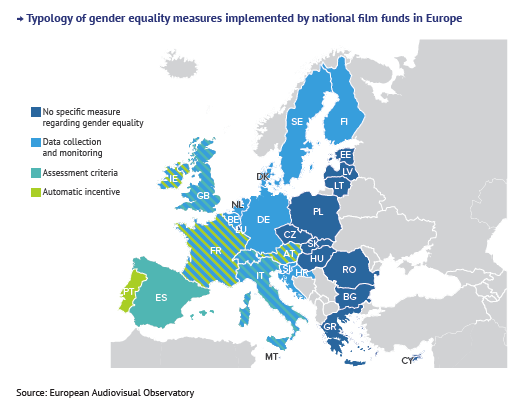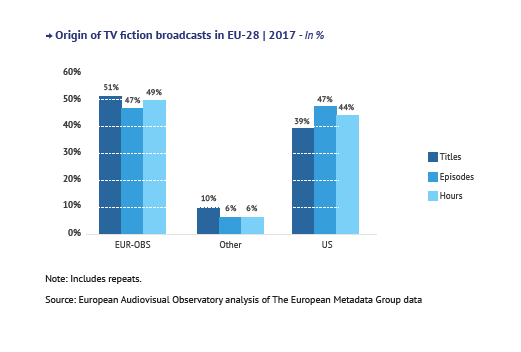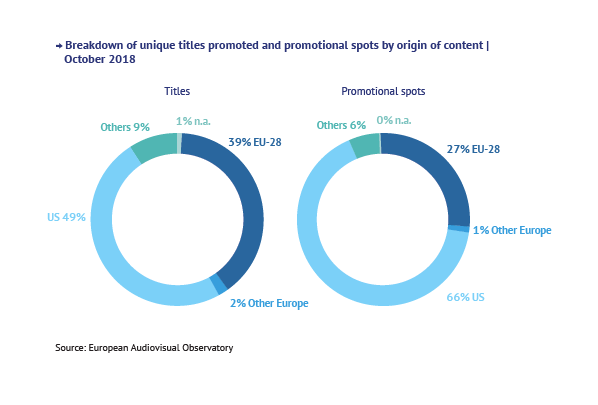Get it here
- 18 out of 28 European countries have gender equality measures in operation within their film funds
- 50% of TV fiction broadcast on TV is European
- Visibility on VOD: European films benefit from 27% of promotional measures
These are some of the findings of Key Trends 2018/2019, the European Audiovisual Observatory’s yearly digest of what’s hot in European media: TV, film and VOD. The Observatory, part of the Council of Europe in Strasbourg, outlines the big picture of the European audiovisual sector with this very readable round-up of the key data from Observatory research. The authors drill down into recent trends and hot issues.
This year we’re asking the key questions:
- Is the European audiovisual market growing?
- What is US groups’ share of the European market?
- Do European films export?
- How many TV channels are there in Europe?
- What is in the new AVMS Directive?
Some take-aways from Key Trends:
1. 18 out of 28 European countries have gender equality measures in operation within their film funds
Our chapter on gender equality measures in European film funding provides a useful overview of the strategies currently in place. For example, the French CNC has created in 2019 a 15% support bonus for film projects with balanced female representation, fostering parity in selection committees. Other measures include the visibility of female and gender-equal films and works – for example. Spain’s ICAA has introduced a gender equality label as a way of categorising films “especially recommended for fostering gender equality”. In addition, there are training, mentoring and networking measures; for instance, Screen Ireland’s “POV: Production and Training Scheme for Female Creative Talent” offers a variety of training options especially oriented towards female professionals.
2. 50% of TV fiction broadcast on TV is European
European TV fiction programmes accounted for 51% (in number of titles), 47% (in number of episodes) and 49% (in hours) of total TV fiction broadcasts in the EU-28. Among EU-28 TV fiction broadcasts, TV fiction originating from Germany led in terms of number of titles (due to the high number of TV films produced in the country) whereas UK TV fiction led in terms of number of episodes and hours.
3. Visibility on VOD: European films get 27% of promotion
Having measured the promotional spots targeting European films in transactional VOD catalogues, the Observatory has found that the share of promotional spots for European films (27%) is in line with the share of European films in TVOD catalogues. Out of the countries of the sample, the UK dedicated the fewest promotional efforts to European films, and France the most. This again reflects primarily the composition of the catalogues. National players dedicated significantly more promotional space to European films (34%) than international players (23%), in line, generally speaking, with the composition of the catalogues.




